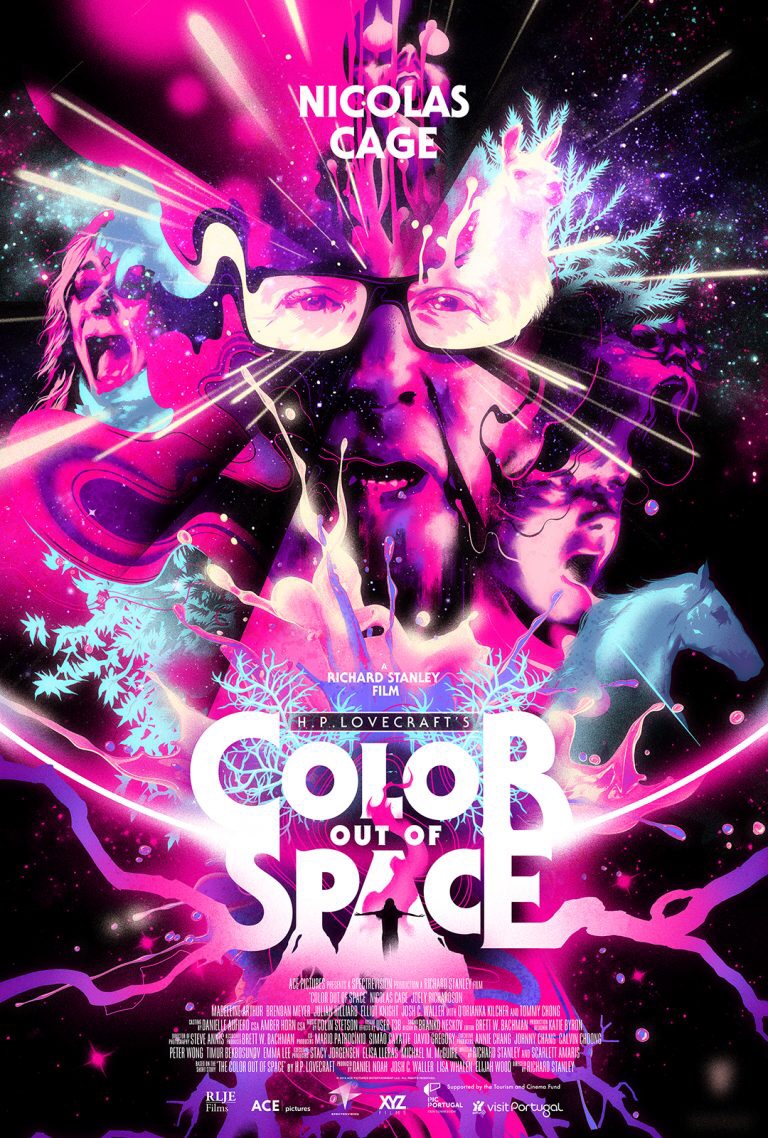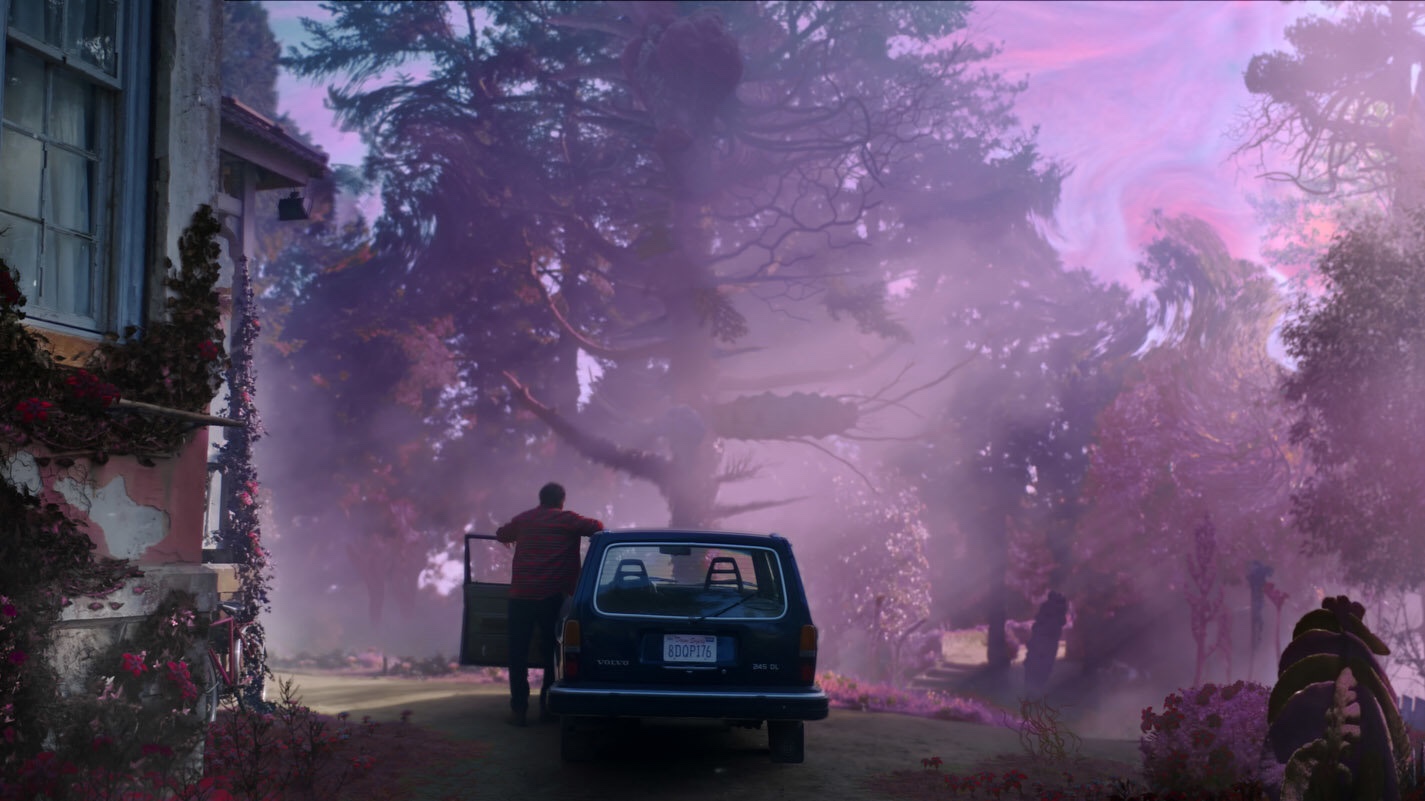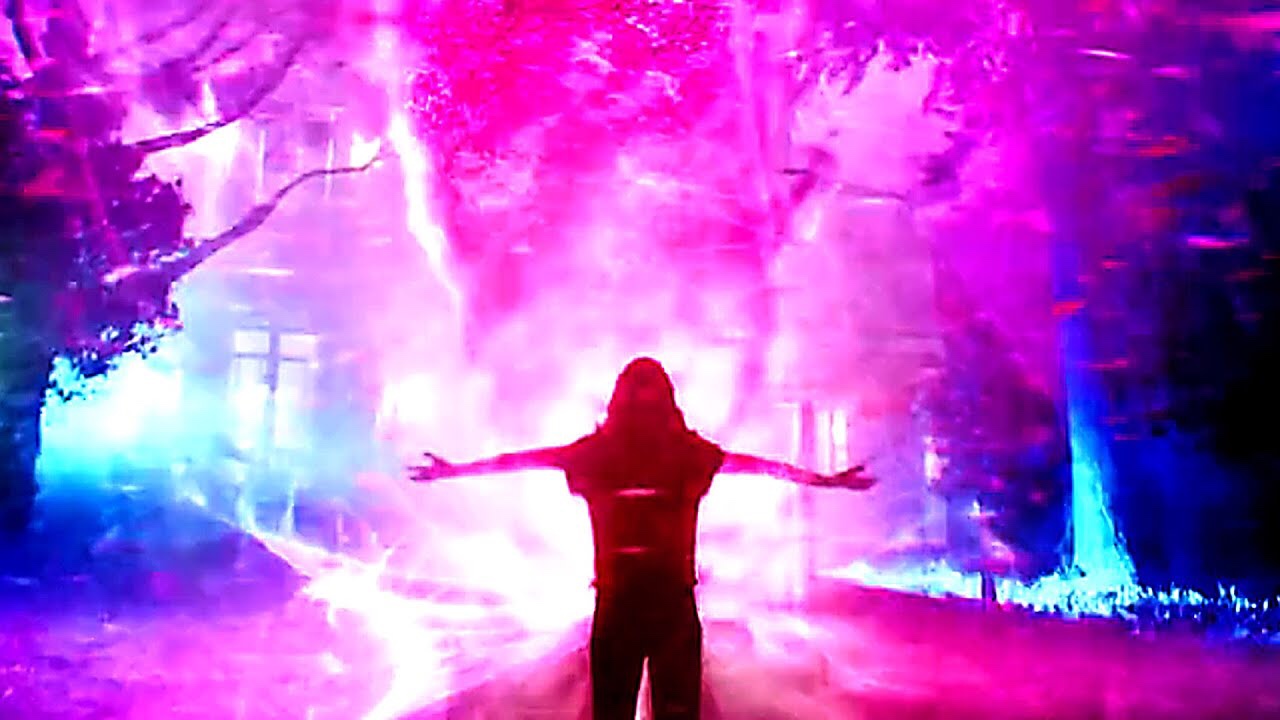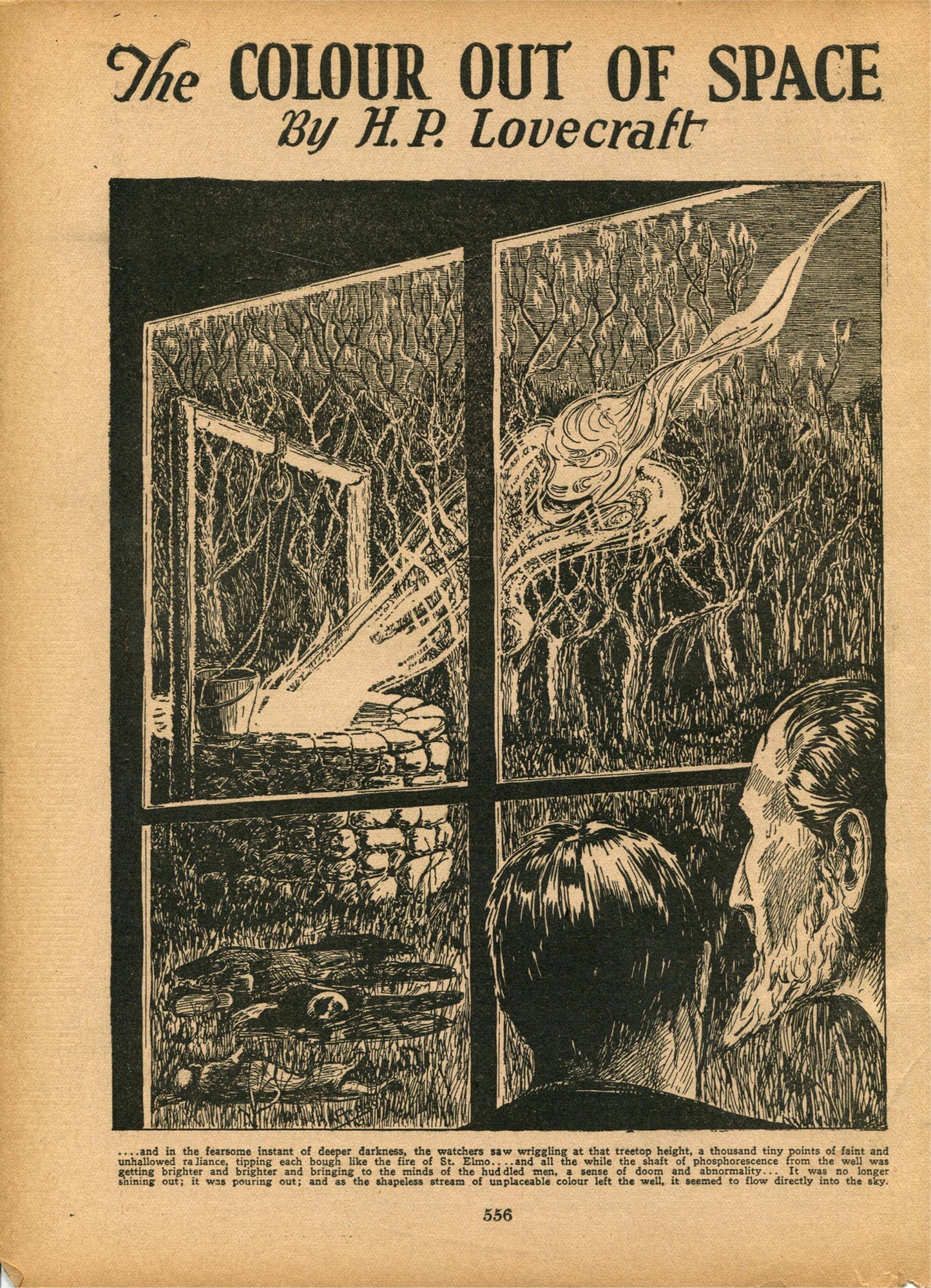 The colour is purple, now that ‘spoiler’ is out of the way you can focus on the rest of the review.
The colour is purple, now that ‘spoiler’ is out of the way you can focus on the rest of the review.
Colour Out of Space is an adaptation of the H.P. Lovercraft short story of the same name. Lovecraft has his narrator describe the colour of space as “pink” but then, true to form, describes it as indescribable. The colour arrives as a meteorite which brings terror to a small farm, transforming plants, animals and people into grotesque forms.
The film focuses on the Gardner family, who have decided to set up an Alpaca farm, a weirdly funny choice of stock. Alpacas may well be “the animal of the future” but they are way too adorable and oddly proportioned to rank alongside dogs, cats and birds as menacing animals. Then again, they underline the family’s guileless, utopian and soon to be dashed ambitions, to get away from it all.
The father, Nathan, is played by Nicolas Cage who is actually a little restrained here than for some of his performances, even when he does get a change to go nuts. This may be due to the script, which is occasionally pedestrian. Nathan’s wife, Theresa, (Joely Richardson) gradulally descends into self harm, madness and grotesque mutation. Eldest son Benny (Brendan Meyer) is supposed to be a massive stoner although manages to be pot free. Then again, reality itself has come to resemble an acid trip.

Colour of Space opens with a surveyor (played by Elliot Knight) stumbling across Nathan and Theresa’s daughter, Lavinia (Madeline Arthur), who is engaging in a pagan ritual on the shores of a lake.
Needless to say, HP Lovecraft’s original story doesn’t have female characters, let alone a protagonist. Lavinia’s hair has purple streaks and she has a paperback copy of The Necronomicon at hand in her bedroom. (I struggled to believe what publisher would make this arcane guide available to the general public or what the consequences would be).
There is clearly an effort to align the girl with the meteor, the colour, and ancient forces lie behind it.
It’s entirely appropriate that the producers of Mandy, the recent utterly bonkers Nicolas Cage vehicle, are also behind Colour Out of Space. Mandy had the feel 1980s’ horror cinema, made available in the UK through the wonders of VHS. Colour Out of Space obviously begs comparison with other Lovecraft adaptations of that decade, notably director Stuart Gordon’s Re-Animator and From Beyond. Colour out of Space also consciously references other horror movies, such as The Shining and John Carpenter’s The Thing.

The effects budget doesn’t stretch to the prosthetics needed to convincingly carry off what is, at heart, a body horror movie, but the evocation of a colour that is supposed to be outside the normal spectrum is well executed and there are some beguiling CGI creature effects. By the time one of the characters declares “There’s something wrong with the alpacas!” you have a pretty good idea that what is wrong is going to be unpleasant, but also a bit silly.
Colour Out of Space sees the welcome return of director Richard Stanley, who won critical acclaim with Dust Devil (1992), but was then thrown to the wolves with an adaptation of The Island of Doctor Moreau, a film that was beset with as many problems as dogged the careers of Orson Wells and Terry Gilliam. A documentary about that production sees a nervy, oddball Stanely recalling the nightmare of making a film which its two leads seem to have decided to totally sabotage. (The Island of Doctor Moreau was finished by other hands, with Stanley hiding out on location as an animal-man).
It is good to see Stanley back behind the camera. He captures the loneliness and unnerving feel of areas comparable to forests and islands off the coast of British Columbia, although the film was shot in Portugal.
Stanley brings a lot of his own interests to film:,there’s even a sly clip of Marlin Brando, who took HG Well’s description of Dr Moreau as ‘white faced’ to such ludicrous lengths that his performance has been the butt of jokes in South Park and a scene in Austin Powers: The Spy Who Shagged Me. Perhaps Stanley feels Brando’s antics were not unlike the time and space warping colour out of space.
Colour Out of Space was released on 28th February, but you’ll be hard pressed to find a cinema screening. Even the art house venues in Brighton have shunned it; a shame. The film is fun, inventive, literate and a hoot for fans of cult horror movies. Catch it if you can.
Tim Robins

WEB LINKS
• For further commentary check out Mark Campbell’s review on YouTube
• There’s an interesting interview with Richard Stanley in Rue Morgue magazine
A freelance journalist and Doctor Who fanzine editor since 1978, Tim Robins has written on comics, films, books and TV programmes for a wide range of publications including Starburst, Interzone, Primetime and TV Guide.
His brief flirtation with comics includes ghost inking a 2000AD strip and co-writing a Doctor Who strip with Mike Collins. Since 1990 he worked at the University of Glamorgan where he was a Senior Lecturer in Cultural and Media Studies and the social sciences. Academically, he has published on the animation industry in Wales and approaches to social memory. He claims to be a card carrying member of the Politically Correct, a secret cadre bent on ruling the entire world and all human thought.
Categories: downthetubes News, Features, Film, Other Worlds, Reviews
 In Review: MONOLiTH: AN ACE ODYSSEY by David Leach
In Review: MONOLiTH: AN ACE ODYSSEY by David Leach  In Review: The Marvels
In Review: The Marvels  In Review: Meg 2: The Trench
In Review: Meg 2: The Trench
Judging from my own experience, Lovecraft’s writing exerts a powerful influence on the adolescent imagination, but, sadly, when one grows older the “magic” vanishes. That being said, Lovecraft’s story has all the ingredients for a really powerful film and is a gift to the imaginative adaptor. It lends itself ideally to CGI effects. I think Tim Robins is mistaken in saying that the original contains no female characters. As I recall, the fated farmer’s wife is the first to succumb, and when one of his sons also succumbs and has to be confined they seem to communicate in screams. If the film is set in the present or near present, the paperback Necronomicon is authentic. Such a volume, purporting to be Lovecraft’s black bible, was indeed published a few years ago. I used to possess a copy myself!